Here is your chance to sail the Greek Islands
virtually,
through John and Anneshka’s photos.
Saturday 21st September 1800hrs
Bring a Greek or Greek inspired plate to share.
All welcome.
Venue TBA
Here is your chance to sail the Greek Islands
virtually,
through John and Anneshka’s photos.
Saturday 21st September 1800hrs
Bring a Greek or Greek inspired plate to share.
All welcome.
Venue TBA
Macleay’s Honeyeater (Xanthotis macleayanus) is one of Paluma’s most common birds in our gardens and at feeders. While it eschews the dramatic displays and gaudy colours of some of our other regulars around the village, dedicated observers grow to appreciate its soft pastel colours and tartan pattern. It is also special in being one of 13 bird species that are endemic to (only found in) the Wet Tropics. Its distribution extends from Paluma range in the south to Cooktown in the north.
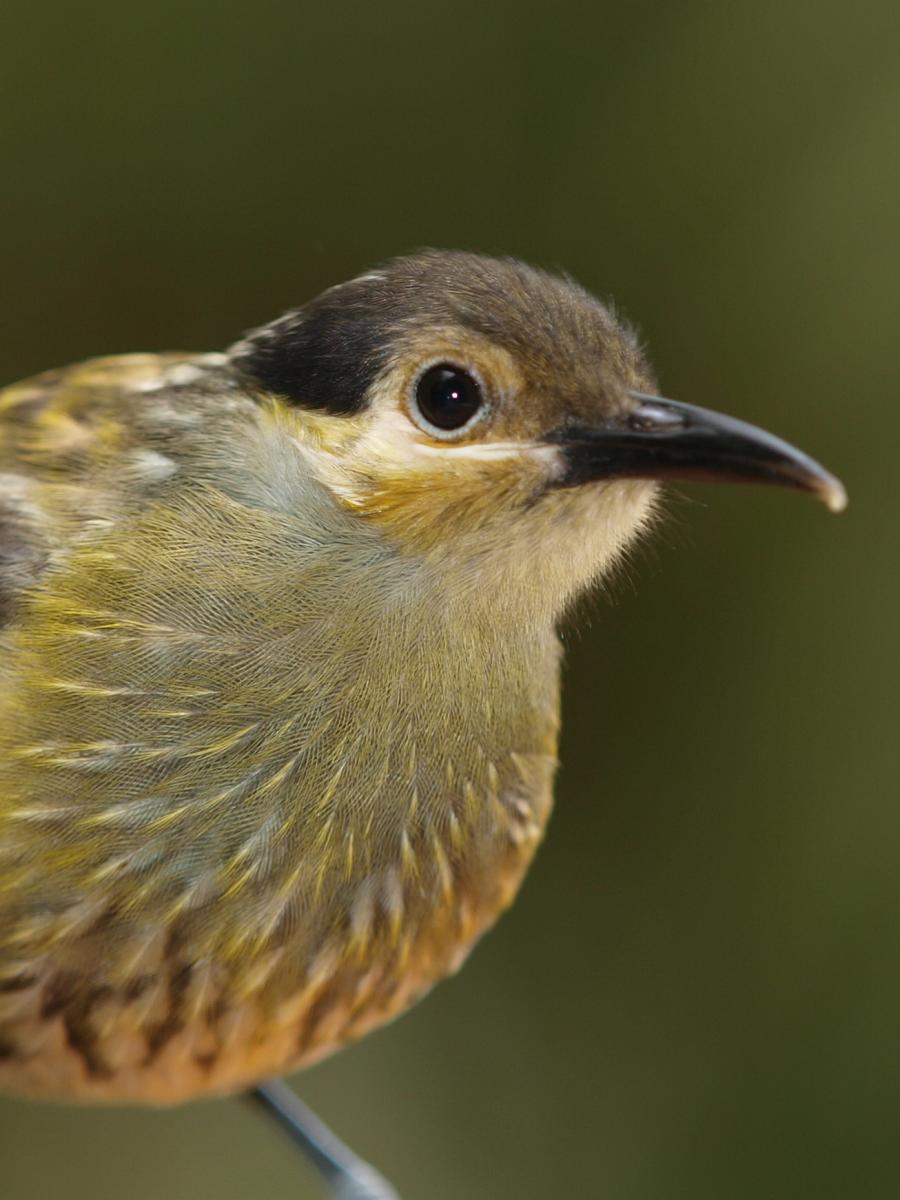
In the forest, Macleay’s Honeyeater is found mostly in the forest canopy where it forages for a range of insects and spiders (its predominant food) as well as nectar and fruit. It is most abundant at lower altitudes, but you would never know it from the vantage point of a typical porch in the village, where it is one of the most common visitors at feeders and is easily encouraged to eat from a hand. In town, it will eat a variety of food on offer although providing processed food to native wildlife is never a good idea.
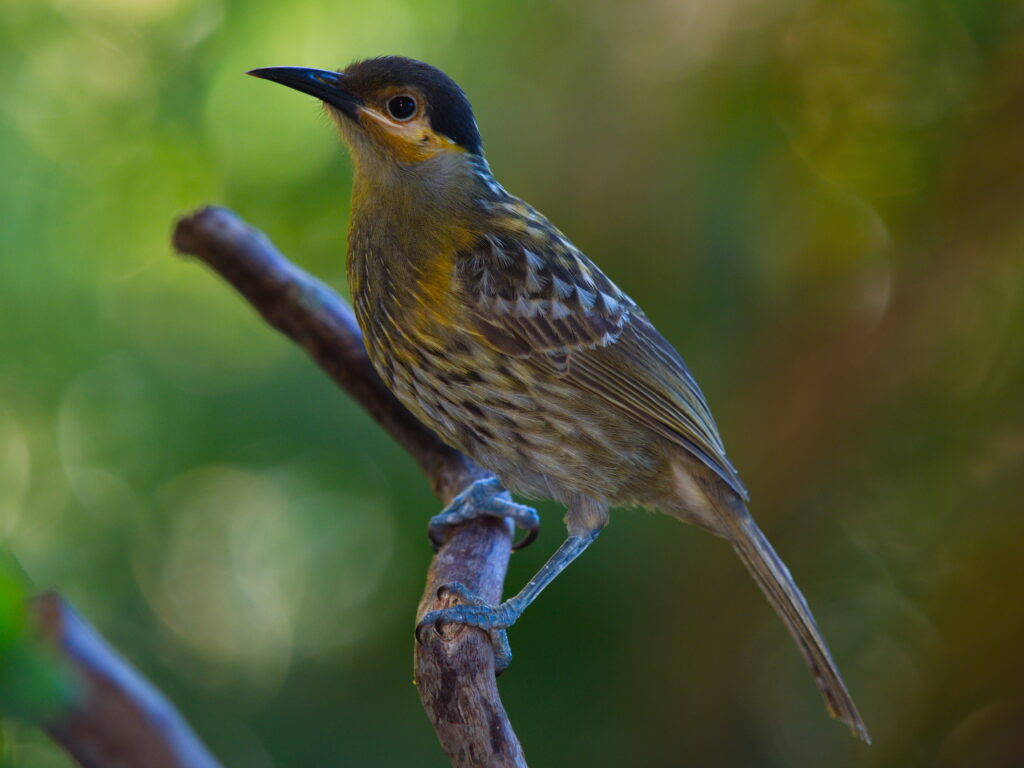
Macleay’s Honeyeater commences breeding in September. Nests are generally located in very dense vegetation in the canopy (7.5m and above) but occasionally lower. The female is the primary incubator of the eggs, but both parents feed the young.
The genus Xanthotis is derived from the Greek xantho (yellow) and otis (ear) which is a distinctive character of this species. Both the common name and scientific name also pay homage to Sir William Macleay (1820-1891). He was a Scott who emigrated to Australia as a young man. After achieving financial security as a pastoralist (and through marriage) he became a politician and then spent most of the rest of his life indulging in his passion for natural history. He was the founding President of the Linnean Society of NSW, a prolific author, a generous patron of the sciences and an avid collector. His collections were donated to the University of Sydney after his death and formed the basis for the Macleay Museum.
The scientific name is sometimes written as Xanthotis macleayana but this is an error and also a faux pas. Those readers old enough to have taken Latin in school might recognise that the suffix “ana” is used to denote female characteristics whereas “anus” is masculine. I doubt very much that Sir William identified himself as a female!
Text and Photos by Jamie Oliver

Did you know that Koalas can be found in the open forests west of Paluma and much of the sclerophyll forests in the eastern Queensland coastal area of north Queensland? If you would like to know more about koalas or share any sightings you have made in the region, The Australian Wildlife Conservancy is hosting a community workshop leading up to some targeted Koala monitoring later this year.
Felicity L’Hotellier, Senior Field Ecologist for the AWC is inviting Paluma residents to attend the workshop on Wednesday, April 19th. The workshop will be hosted on site at Mount Zero-Taravale’s bush camp. The day will kick off at 9am, and wrap up by 3:30pm, with informal discussions throughout the day including a round-table with those in attendance.
Attendees are invited to camp on site (would need to supply their own tents/sleeping gear), with AWC to provide basic catering from the evening of the 18th through until the morning of the 20th. For anyone interested, an evening spotlight drive and a visit to our new feral predator-free exclosure fence is also planned.
This invitation is restricted to Paluma residents and you are asked to register for the workshop before April 10th. To register or obtain further information contact Felicity on 0408084 617 or 4770 8025.

Felicity L’Hotellier, Senior Field Ecologist
Mobile. 0408 084 617 Phone. 07 4770 8025
Email. felicity.lhotellier@australianwildlife.org
Taravale, Ewan Road, Paluma QLD 4816
www.australianwildlife.org
Wilfred is again calling for volunteers to attend a Working Bee at the Rainforest Walking Track on Saturday 4th February at 2 pm. The work started in January will continue to repair and upgrade various sections of the track. Steps and drains will be the main works to be undertaken this Saturday.
Volunteers should bring a wheelbarrow and shovel if they have them, but the main requirement is enthusiasm and lots of energy. Please meet at the Community Hall at 2 pm. Refreshments will be provided after the working bee. If you can spare an hour or two, please come along to help out in undertaking this important work to maintain our village walking tracks.

For more than a year several people have raised the possiblity of creating a facebook group for Paluma residents to post notices to others about items for sale or even to let people know of an opportunity to share costs for bringing a plumber or electrician up to the village to do some work.
Well Stella Thompson-Wheway has recently taken the initiative to create just such a group. It’s called Paluma Buy, Sell, Swap and Give away and she is inviting all Paluma residents to join up. The link above should take you there, or else just use the search function to find the group (using “Paluma Buy Sell” in the search box should do it).
There’s already one item for give away on the site, and I am sure more posts like it will follow soon.
Many thanks to Stella for setting this up for the Community.
Our very own ‘Paluma Potter’, Len Cook has taken out yet another prestigious award for his work. Last Friday (22 July 2022) Len was presented with the Betty Jackson Memorial Award at the Perc Tucker Regional Gallery. Some long-time Paluma residents may remember Betty and Graham Jackson who owned a house on Lennox Cresecent. They also owned Loloma Jewellers in Townsville.
The winning artwork is a Flower Container – made from local clay with feldspar inclusions. It is Anagama fired (in Len’s famous kiln). It has a naturally-deposited wood ash glaze produced during the firing.
Congratulations Len on this latest achievement for your hard work.
If you haven’t been to the Gallery at Len Cook Ceramics for a while, drop in and see Len. Why not choose your very own unique masterpiece from an award-winning Potter.
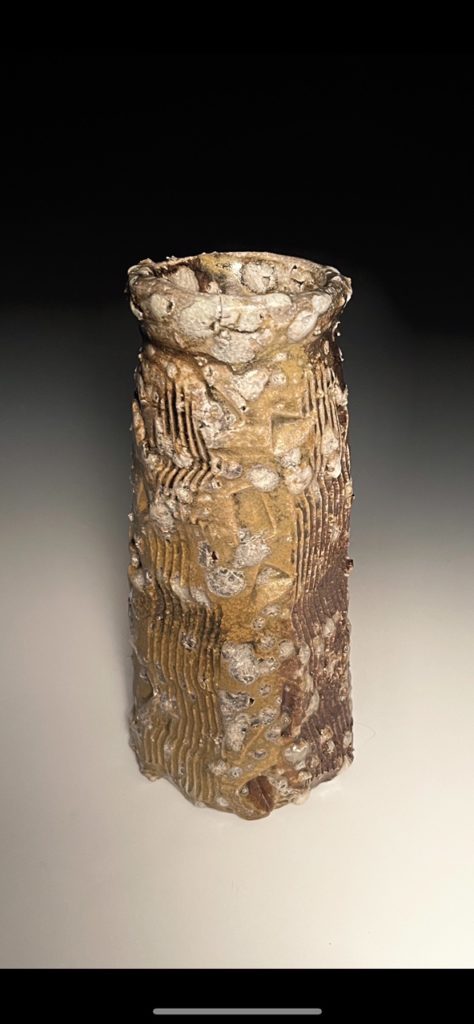
Over the last month or so, one of the consistently flowering plants in my garden, as well as other gardens in the village has been bromeliads.
Broms belong to the family Bromeliacea which includes “air plants” in the genus Tillandsia. They come in an amazing range of colours (on both the flowers and leaves) and flower shapes. They can grow anywhere from full sun to deep shade and in wet and dry habitats.
In Paluma they are great plants for “mature” gardens with a full shady canopy that restricts the number of brightly flowering plants that can grow in the gloom. Currently one of my favourite broms is blooming throughout the village. Bilbergia pyramidalis, like most bromeliads, comes from South America. Its common names (flaming torch and foolproof plant) are certainly apt. It has a stunning large red and purple flower and it tends (at least in my garden to bloom during only a short few days in March when the effect in mass plantings is quite spectacular.

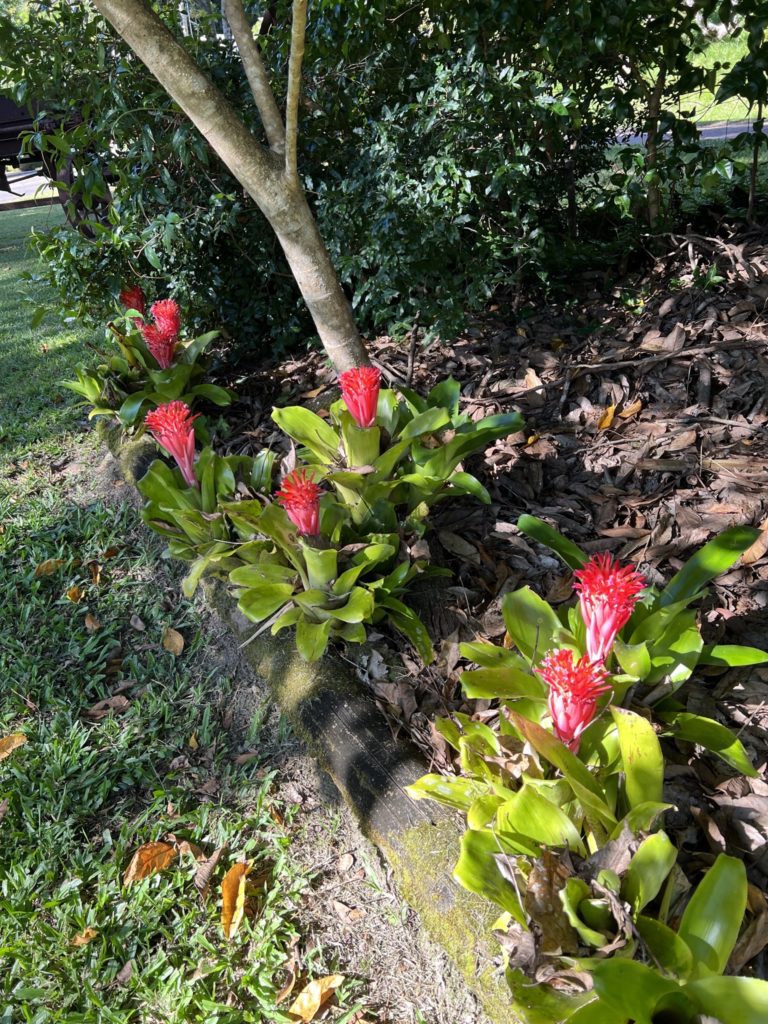
This year the blooming period seems to be less synchronous and more prolonged, perhaps due to the lack of a “proper” wet season.

This species grows prolifically in semi-shaded to fully shaded areas and it is dead-easy (fool proof) to grow and propagate. I have created a living boundary “fence” along one side of my garden by heaping up my endless supply of branch timings and then just tossing B. pyramidalis onto the top of the pile. Three to six months later it formed a living cover and a spectacle of colour once a year thereafter.

A living and flowering border fence
Another stunning relative of the bromeliad that has just finished flowering is the Pink quill (Tillandsia cyanea).
Tillandsias are also called air plants since they can grow epiphytically on tree trunks or rocks without any soil. T. cyanea is different in that it prefers to grow in a small pot of well drained soil. It produces 2-4 “pups” each year so it doesn’t take long to get a row of these delightful plants lined up on a ledge in your garden (see the header for this post).
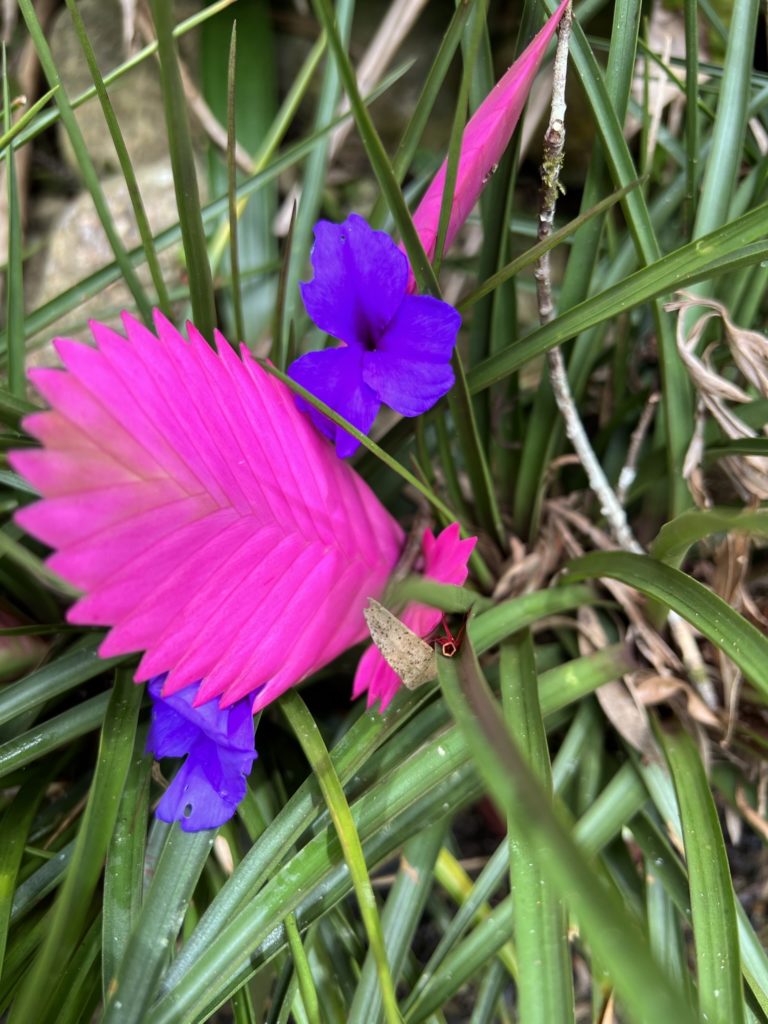
Some of the other broms that have been flowering, or showing off their colours are also shown below, together with any names I have been able to attribute to them (this is still a work in progress). If you are interested in long-lived flowers then Guzmania conifer and Achmea fasciata keep their blooms for up to 6 months or more!







Text and photos by Jamie Oliver
A reminder to all interested Paluma residents that Colwyn Campbell will host a Watercolour & Wine Workshop at 4 pm on Saturday 21 August 2021 at the Community Hall.
If you are planning to attend this fun workshop, please contact Colwyn in the coming week to RSVP your attendance. The number of attendees is required so that Colwyn can arrange materials for the Workshop – paints, brushes and paper, etc. If you have some of your own materials, please bring these along.
Contact details for Colwyn are:- Text: 0404 904 298 or email: colwyn.campbell@gmail.com
Come along and test your artistic ability at the Workshop. You might just have a touch of the Picasso, Monet or Michelangelo lying dormant within…..!

Don’t forget to come along to the Bush Dance at the Community Hall this Saturday afternoon. There will be a sausage sizzle starting at 12pm and the music will start up at 1 pm. Bring a gold coin donation in lieu of admission and extra cash for food and drinks.
by Jamie Oliver
Pollia is a large herb often found in disturbed shady areas along some of the walking tracks around the village. It is sometimes called ‘Wandering Jew’, although it is much larger than the weedy Tradescantia fluminensis of the same common name. Both are in the family Commelinaceae.
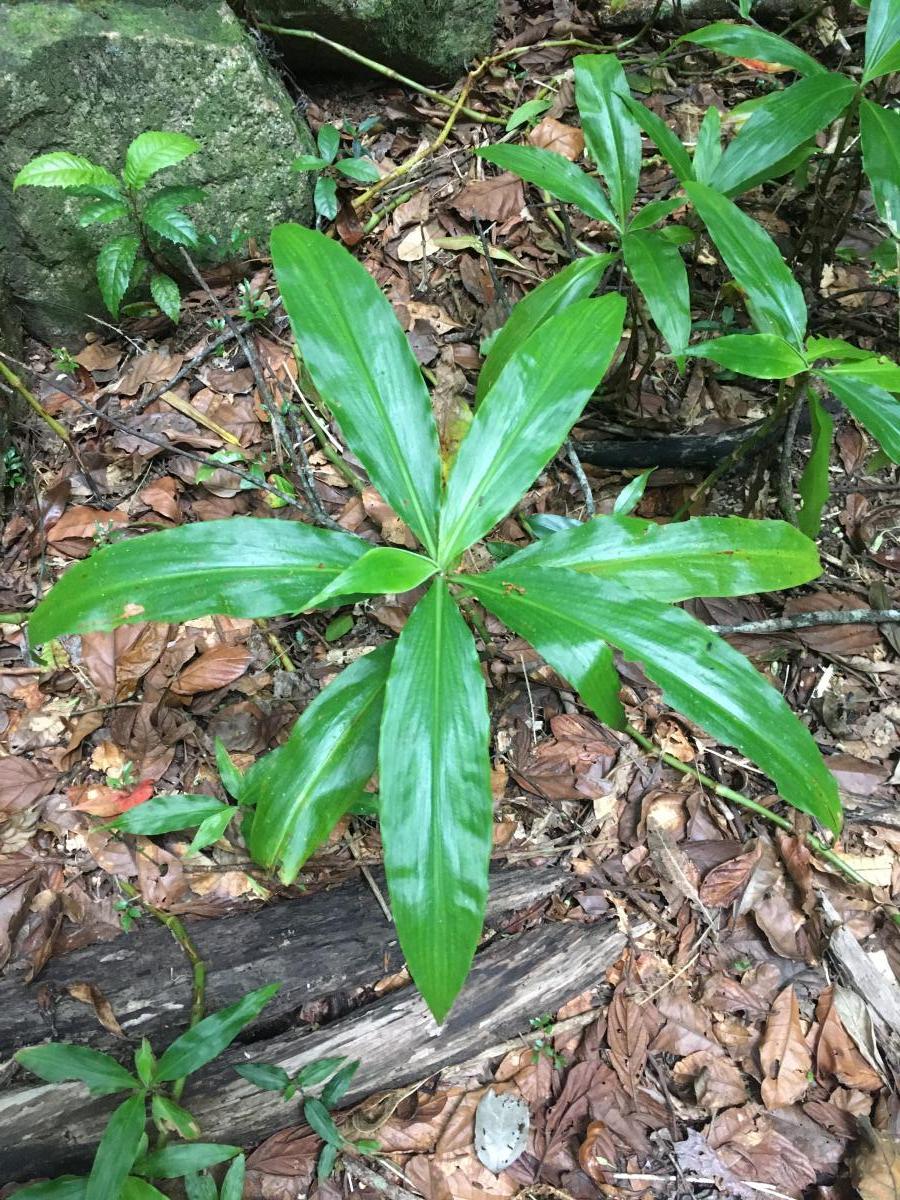
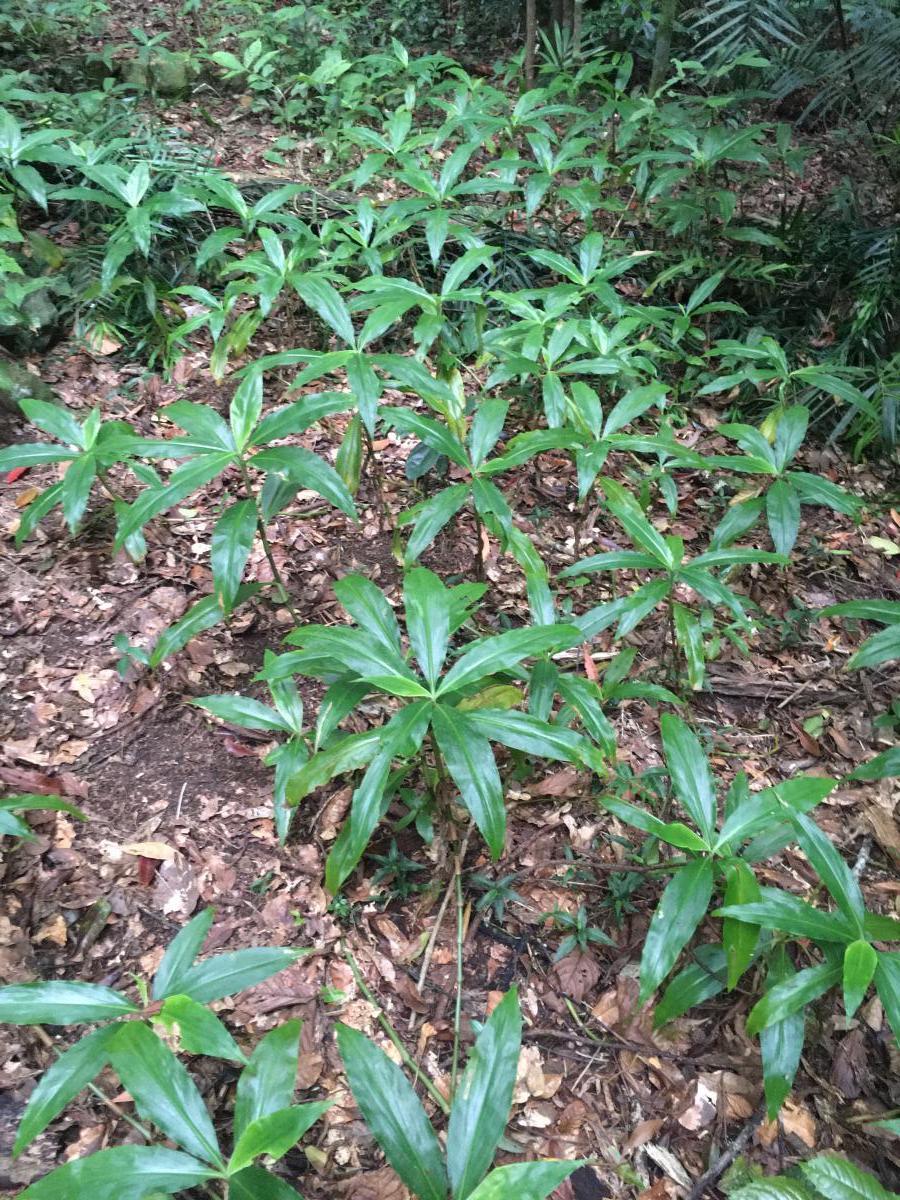
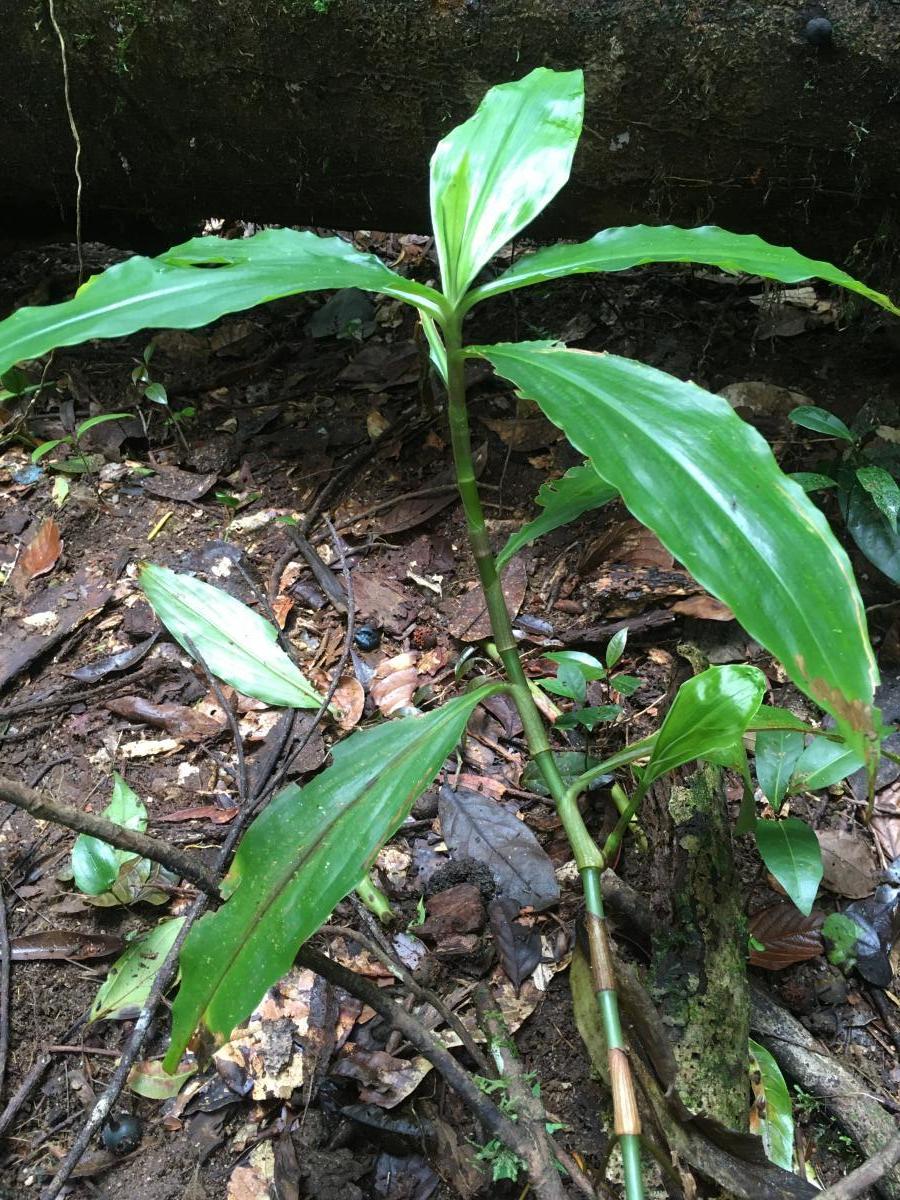
.jpg?bwg=1614920530)
A terrestrial creeping herb, rooting at the nodes1’, the plant somewhat resembles a Cordyline with an erect stem 50 cm to 2m high and narrow elongate leaves. It has attractive small blue/purple flowers borne at the tip of the plant.
Pollia macrophylla is endemic to Queensland.
There is a large and conspicuous patch near the large buttressed quandong (signposted) on the Witts Lookout track. It is just downhill from the quandong, growing along the old path on the other side of the quandong.
Also a member of the Commelinaceae family, this small creeping native groundcover can be found in shady areas beside rainforest tracks. It has elongate pointed leaves and a lovely delicate flower that is sometimes tinged with purple.

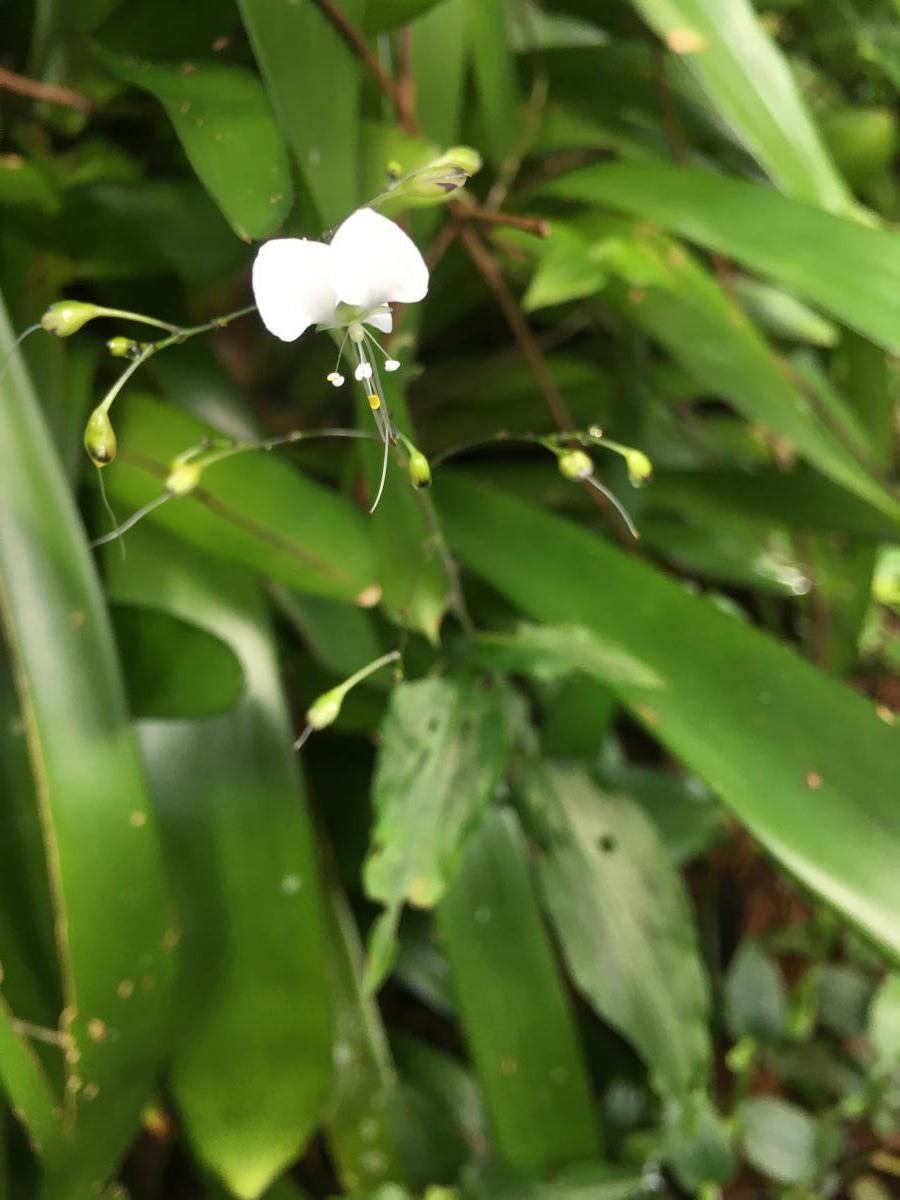
It is often found in Paluma gardens where it struggles to compete with the similar but aggressive introduced Wandering Jew or Trad (Tradescantia fluminensis) which often takes over large shady patches around the village in the wet season. Some Tradescantia species may cause dermatitis or skin rashes in dogs
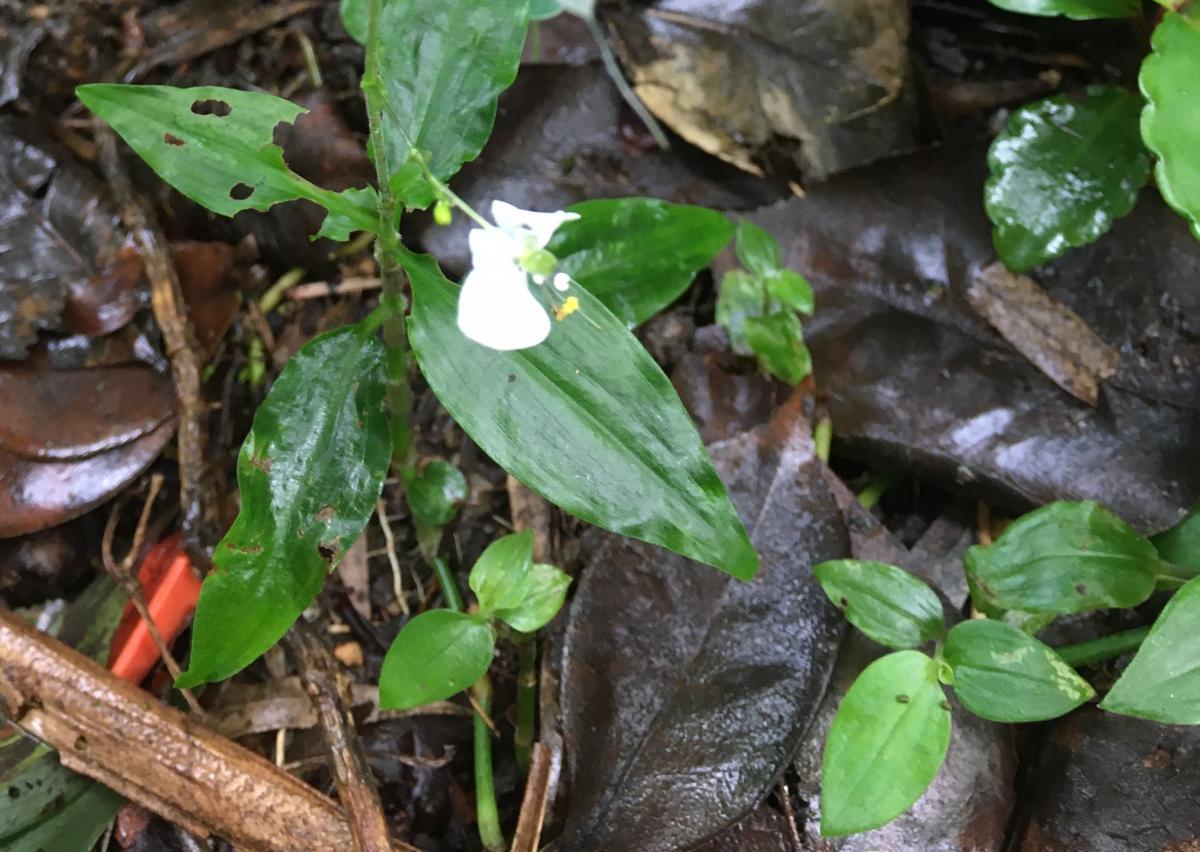
This small shrub is related (and looks very similar) to the showy purple-flowering Tibouchina that is common in gardens throughout the village. Both are in the Melastomataceae family. Melastoma can be found along the main road but also in sunny openings deep in the forest. Its flowers are light mauve/pink in colour and smaller than most Tibouchina flowers. The leaves are covered in fine hairs and have three prominent veins. The plant normally grows to 1-2m.
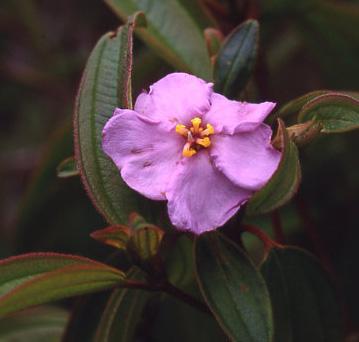
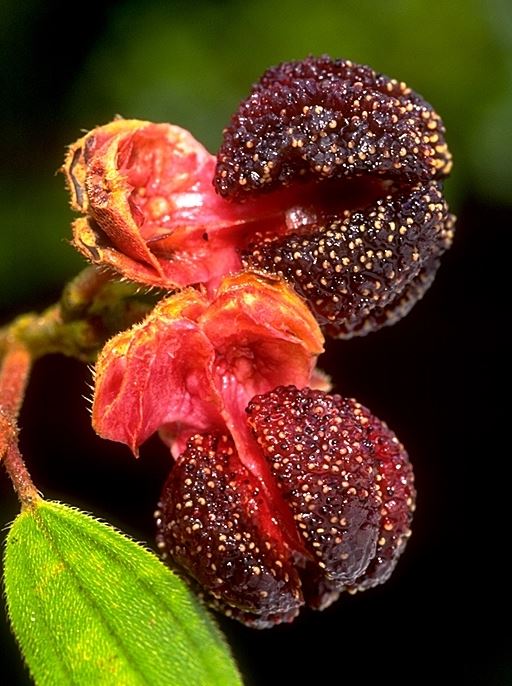
The fruit is red and eaten by double-eyed fig parrots and is apparently edible by humans. Its generic name Melastoma means “black tongue” and one of its other common names is Blue Tongue. Apparently, this is what you can expect if you eat the fruit!
Native Lassiandra can be found across west, northern and eastern Australia in rainforest and other wet areas. It also occurs throughout SE Asia. Some websites and books refer to this species as Melastoma affine, although M. malabathricum subsp. malabathricum is now the accepted name in Australian herbaria.
There are several native species of ginger that can be found in disturbed areas of the Wet Tropics. Around Paluma one of the most common is the Pleated Ginger. This species is endemic to northeast Queensland. Gingers have a distinct growth form with the true stem below the soil (rhizome) and a ‘pseudostem’ above, composed of overlapping leaf sheaths. The bright green elongate pointed leaves are distichous – arranged in two alternately vertical rows. The pleated ginger can readily be identified by inspecting and feeling the under-surface of its leaves, which are covered in fine hairs giving it a greyish tinge, and a fine soft felt-like texture. The flowers are small and white and the fruit are elongate and green, turning dark purple when ripe.
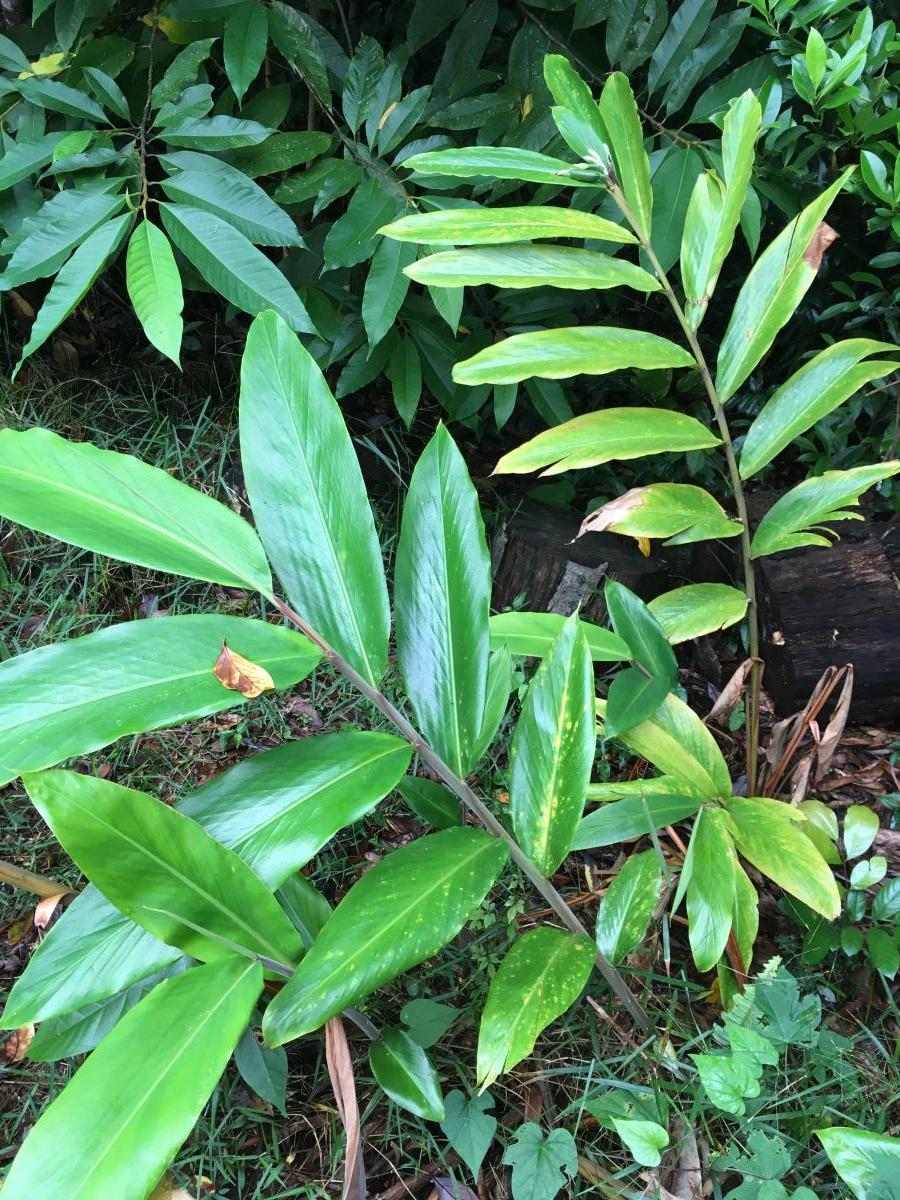

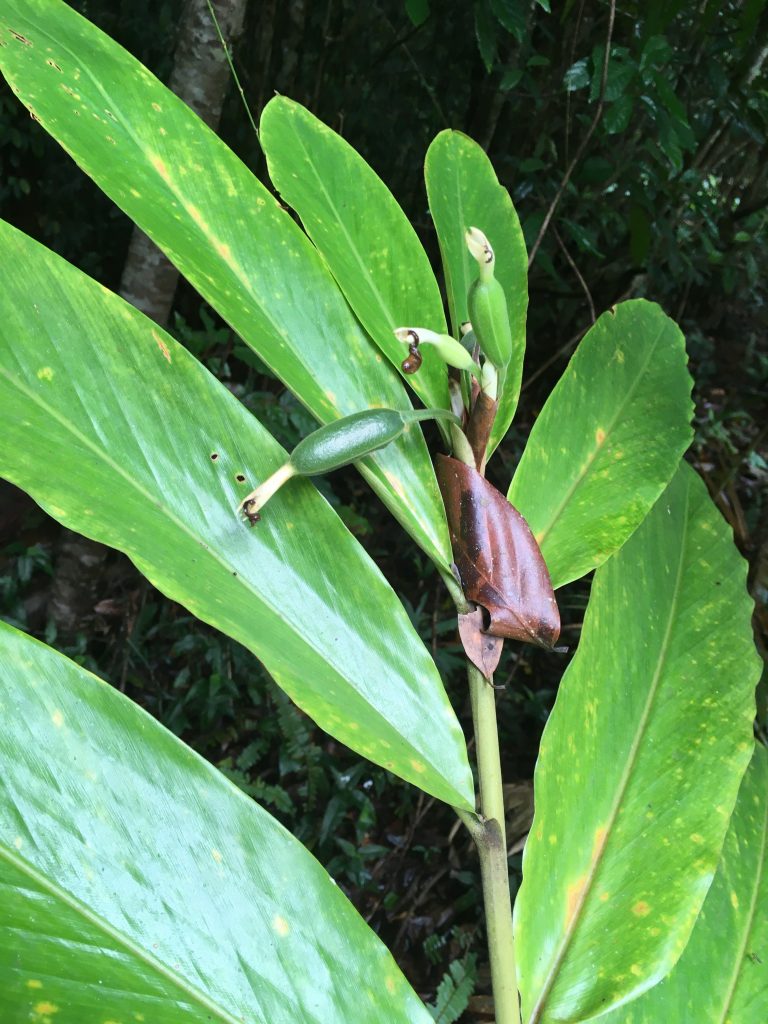
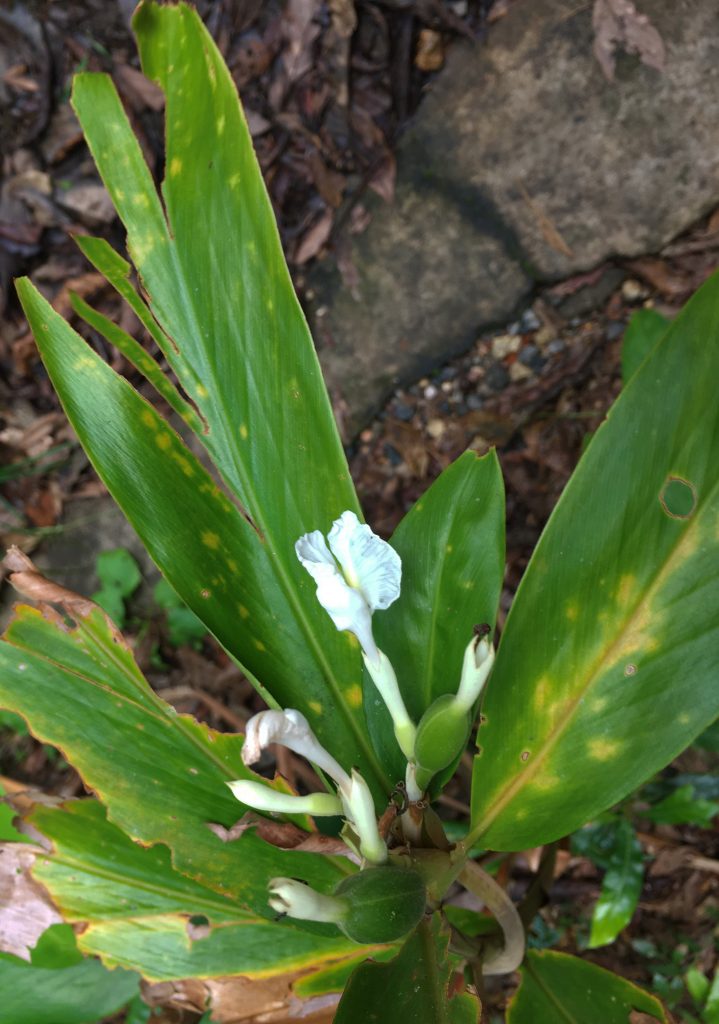
Alpinia arctiflora
The Pleated ginger is one of the larger native gingers (2-3m tall). Another common species (also endemic to Australia) is the native ginger (Alpinia caerulea) which grows to around 1-2m, has smooth green under-surface to the leaves and distinct globular fruit on born on short stalks (1-2cm). The fruit is initially green, turning dark blue as it ripens. The fruit of both species are eaten by Cassowaries.

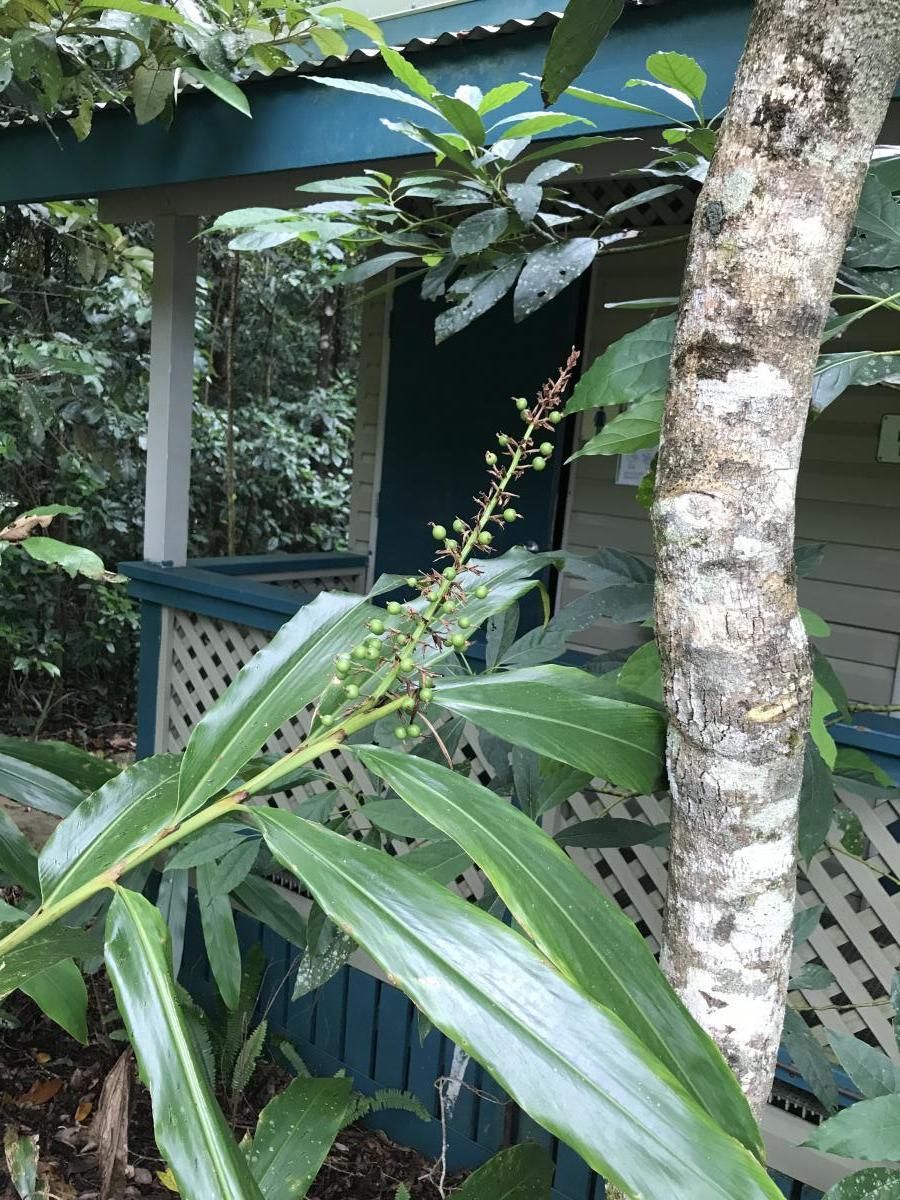
Alpinia caerulea
Don’t be tempted to eat these gingers – ‘edible’ ginger is the rhizome of Zingiber officinale.
Sedges are related to grasses, but they mostly have solid triangular stems, while grasses have hollow stems except at the nodes. The small-seeded saw-sedge is a very common sight in well-lit areas along the village walking tracks. It has a solid round stem and whorls of robust green leaves and often a skirt of dead leaves at ground level concealing a prostrate stem. In open sunny areas it can form large multi-stemmed tussocks. The leaf margins are serrated and can easily cause a painful cut if dragged across the skin. Under a mostly closed canopy these sedges rarely flower but along the roads or in clearings the flower spikes/seed heads can be seen, rising above the leaves with small (3mm x 1.5mm) reddish brown seeds.
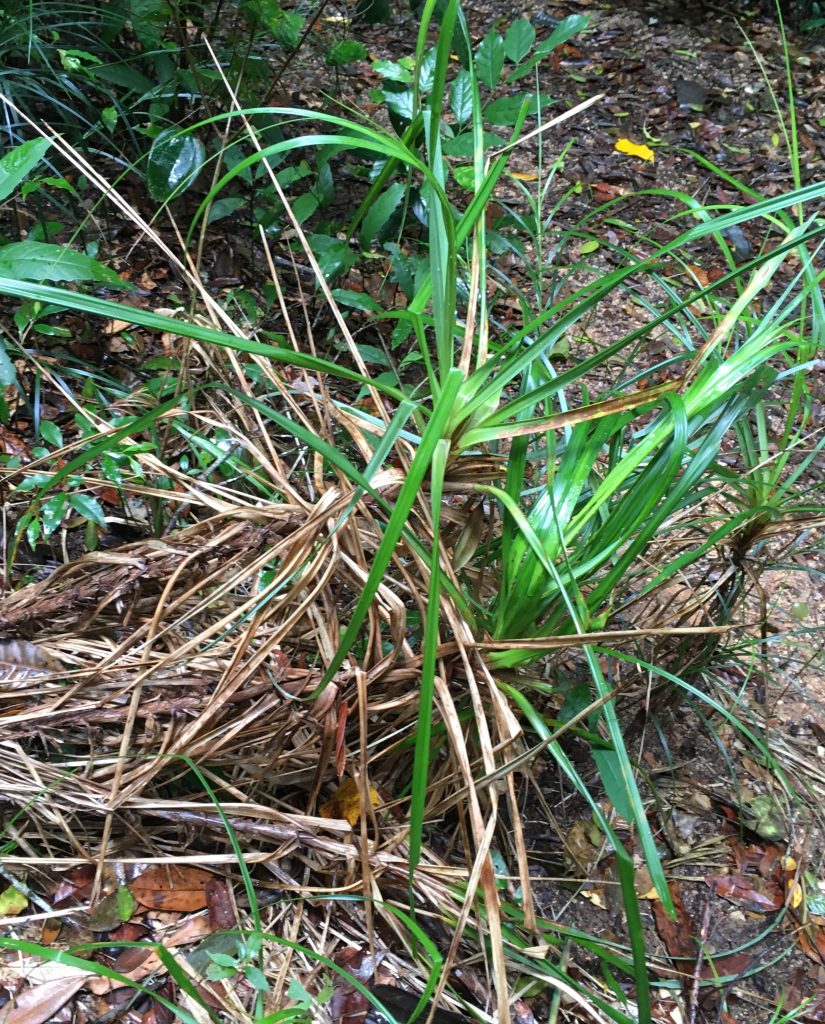
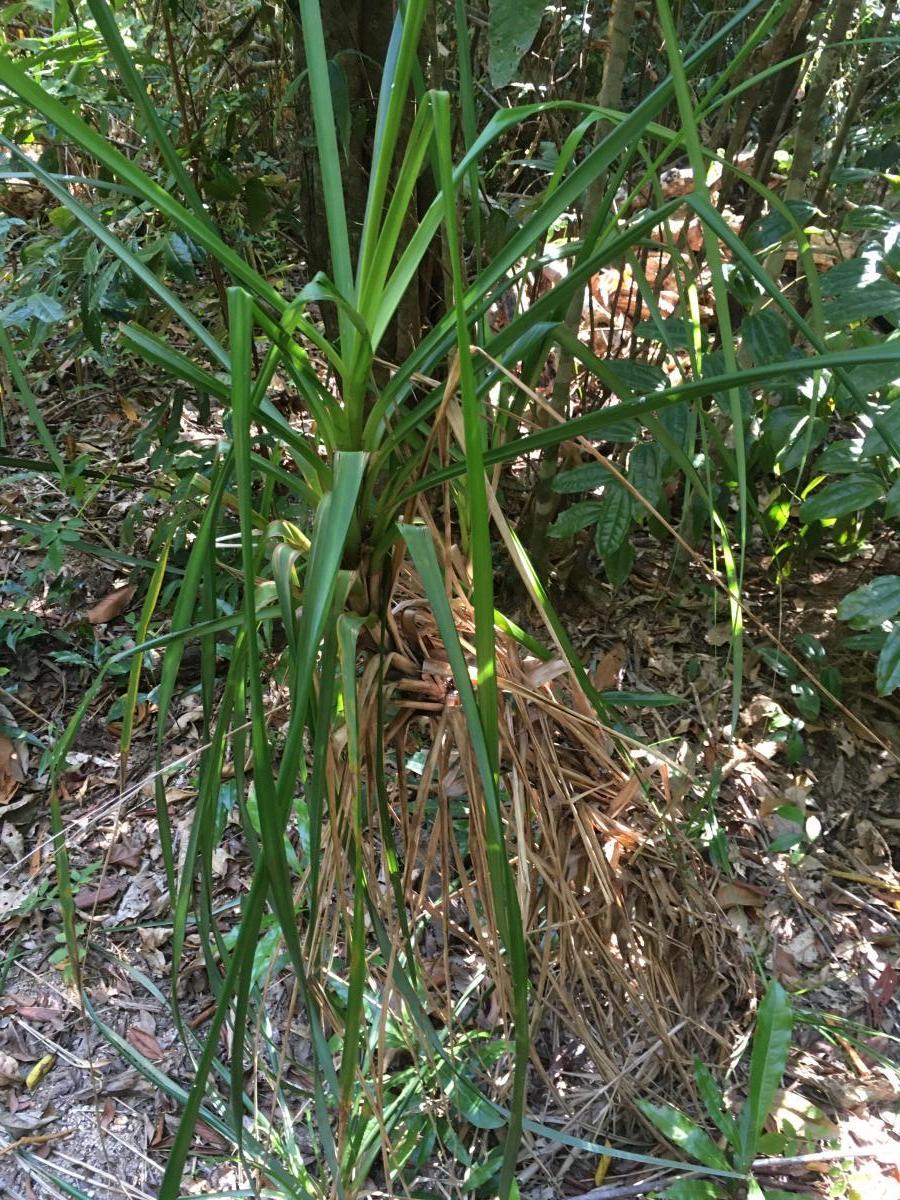
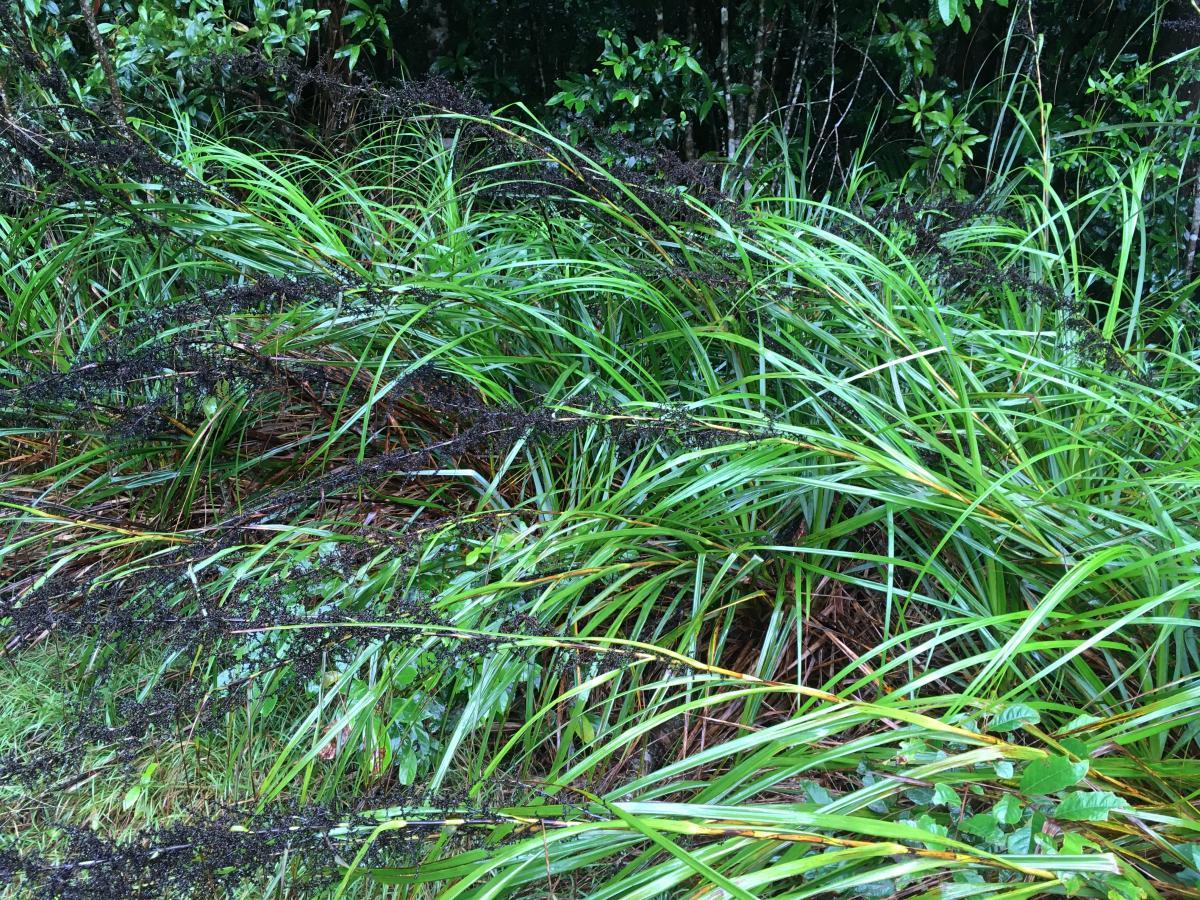
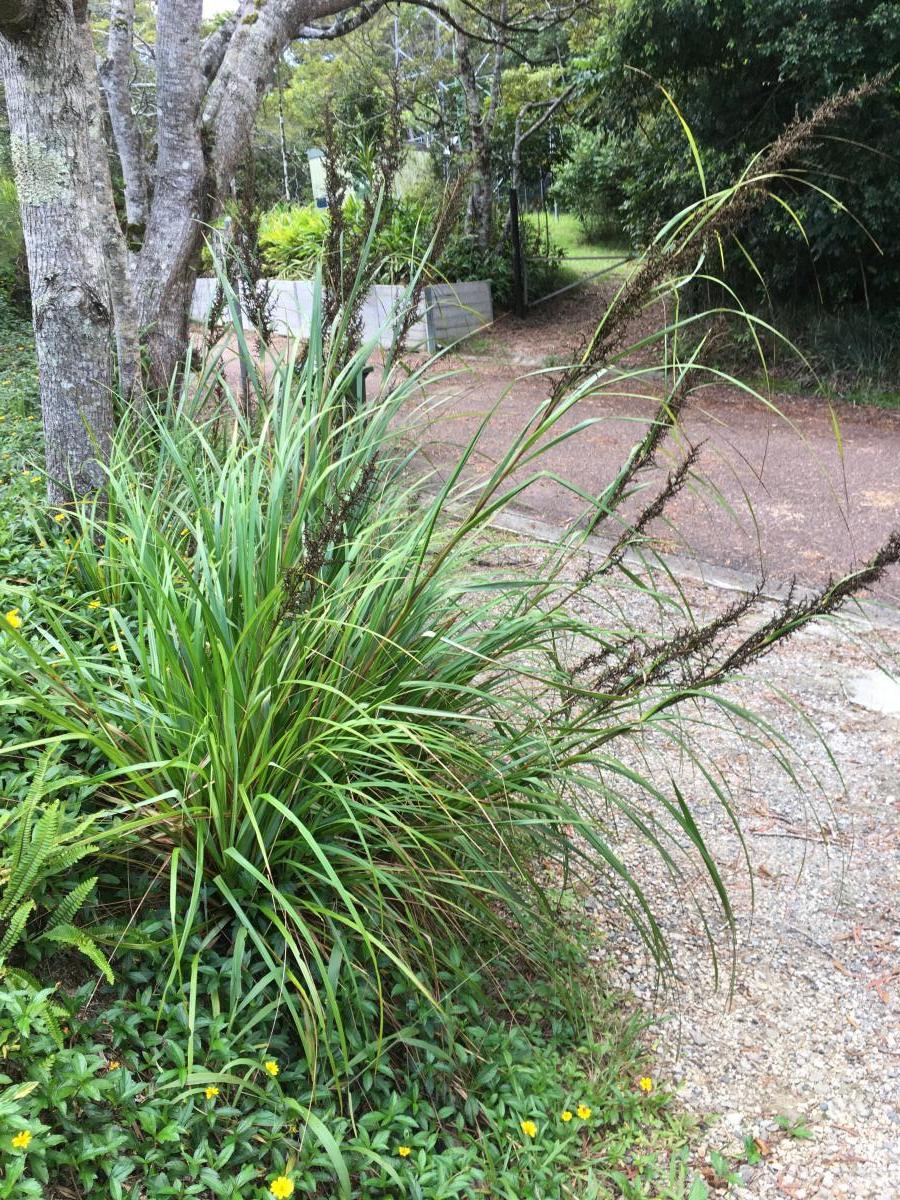
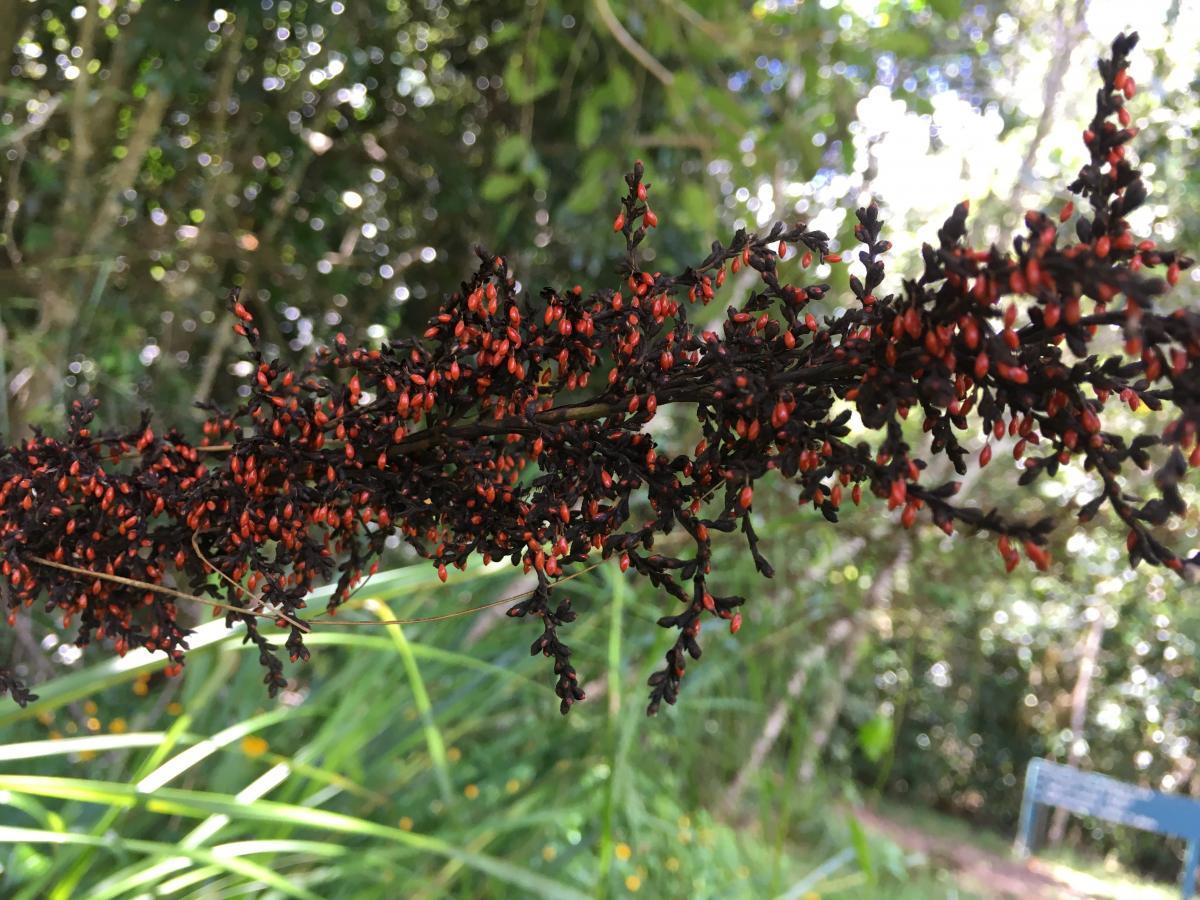
Gahnia seiberiana
Another round-stemmed sedge with serrated margins that is more common beside the main road through the village is the red-fruited saw-sedge (Gahnia aspera). The leaves are similar, but they tend to be spaced wider along the erect stem, and the flower spike emerges midway up the stem and has much larger bright red seeds.
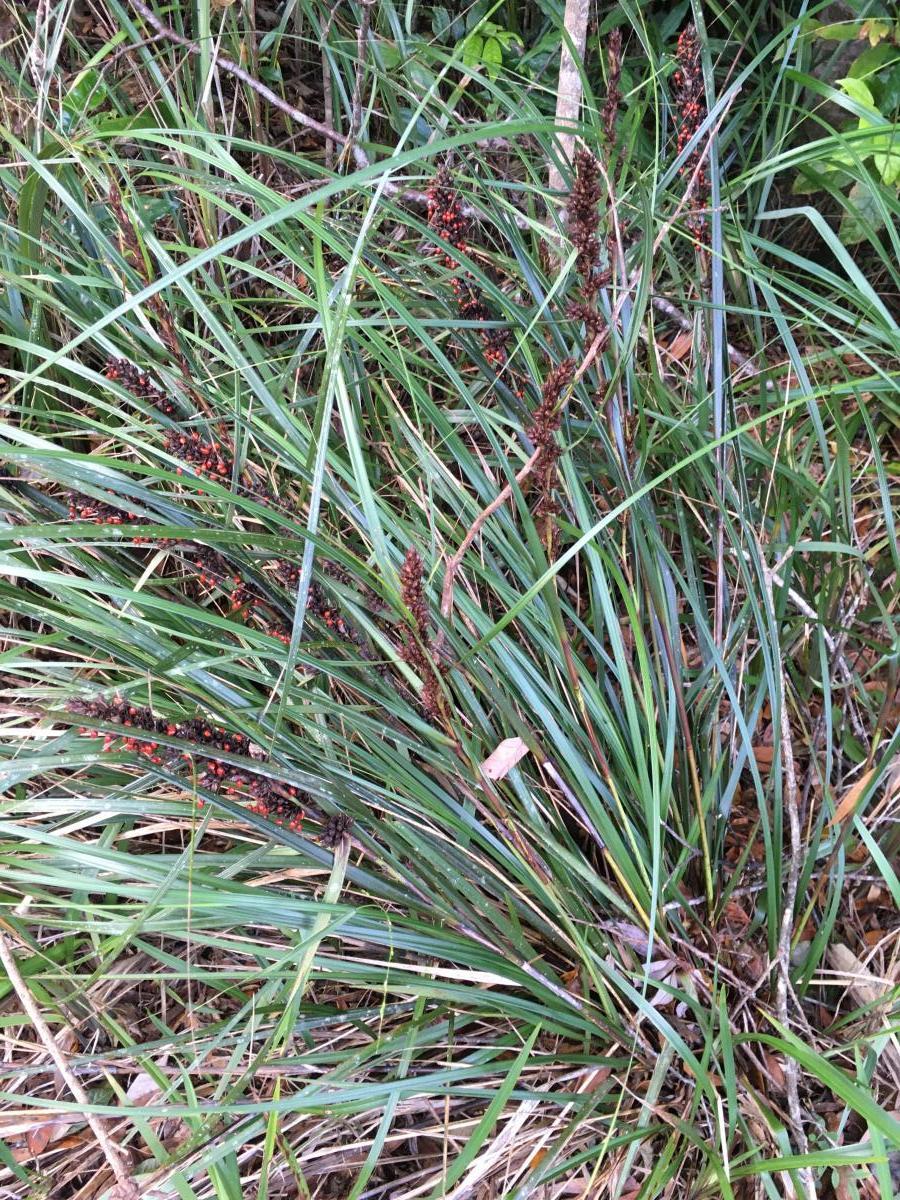
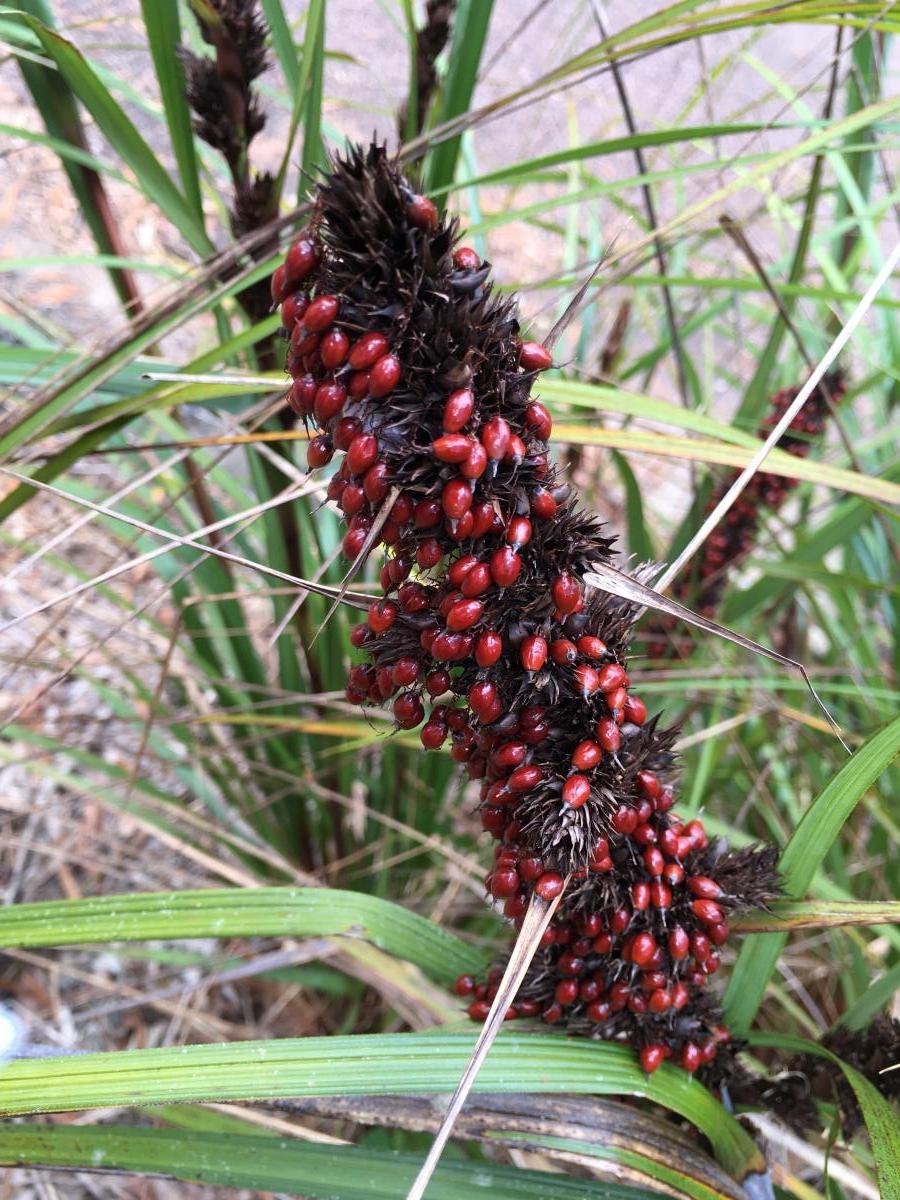

Gahnia aspera
A further kind of sedge, that is much finer and looks more like long fine grass growing on the sides of walking tracks is Cyperus sp. There are several species and they are not easy to tell apart but the group is easy to identify from its grass-like growth form and its distinctive sharp triangular stem.
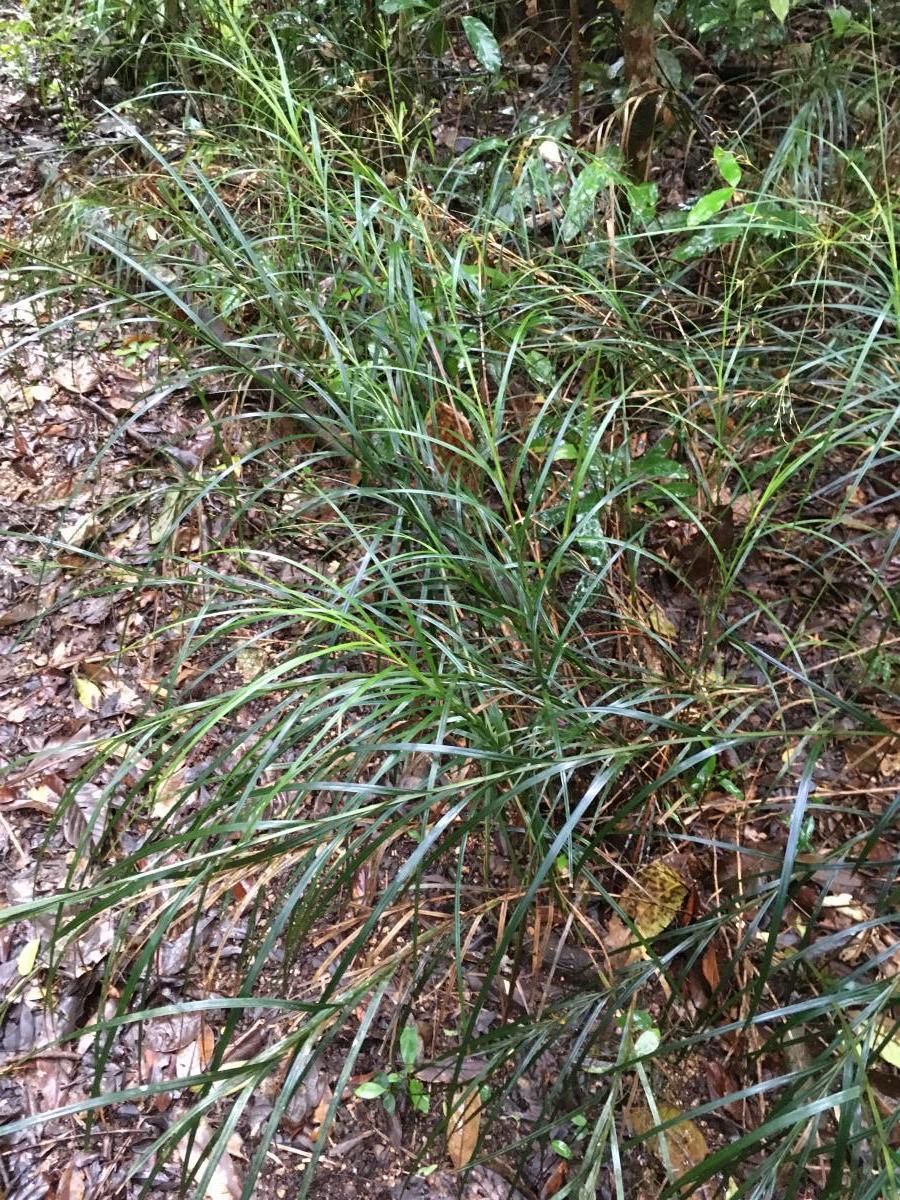
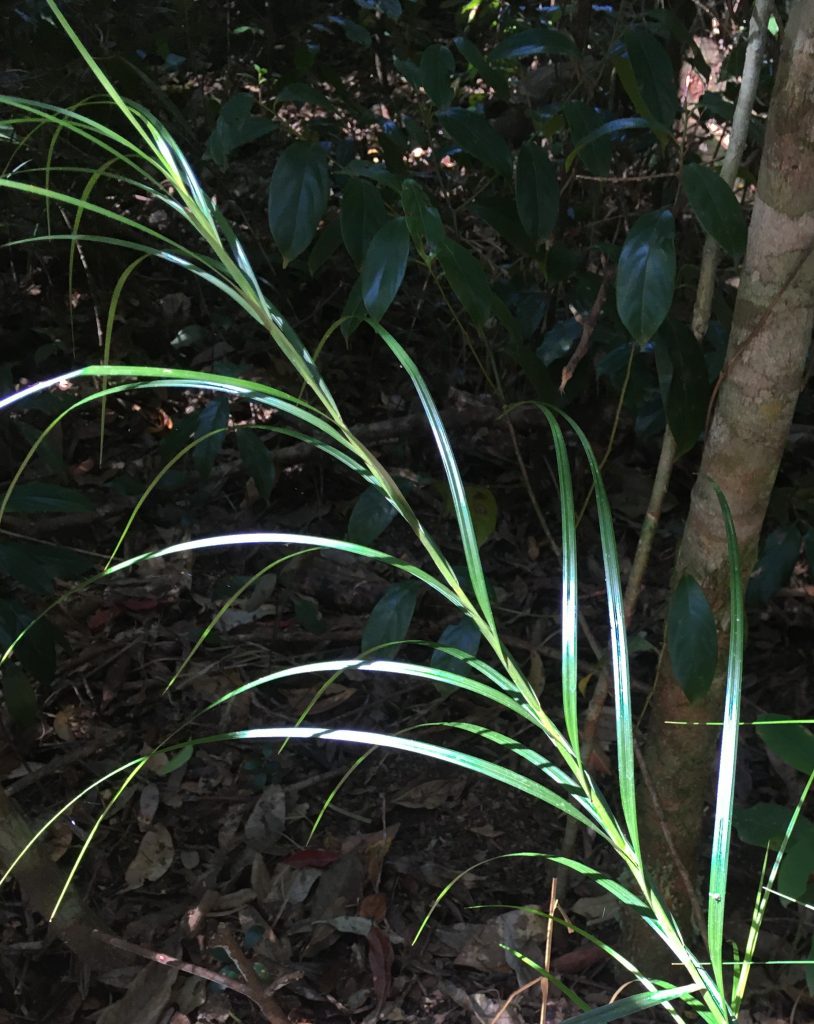
Cyperus sp